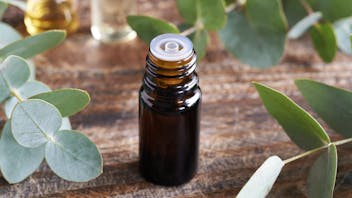Product Overview
Ours Cassie Absolute has a rich, sweet, warm, green, honey-floral aroma with pronounced powdery and soft cinnamic-balsamic undertones. The drydown has a violet-like note due to the presence of the ketone p-bromophenlyhydrazone[1], a constituent that appears to be very important for the aroma of Cassie[2] (there are, however, no current references for this ketone). It is important to note that α- and ß-ionones, present in Cassie Absolute, are constituents that also have violet-like aromas.[3],[4]
Cassie Absolute is extracted from the blossoms of Acacia farnesiana, a small thorny tree native to warm temperate and semi-tropical areas of the world and cultivated in France, Egypt, the West Indies, India and South America.
In modern perfumery, Cassie Absolute is sometimes used to impart intensity; Une Fleur de Cassie composed by Dominique Ropion for Frédéric Malle is considered to be one of the best examples.[5] Like all absolutes, Cassie is chemically very complex and finds applications in Violet, Rose and Jasmine accords.[6] Not to be confused with Cassia (Cinnamomum cassia) or Cassis, a synonym for Black Currant Bud (Ribes nigrum), two completely different aromatic/botanical materials with different chemical constituents and olfactory properties.
DILUTION NOTE: Cloudiness may occur when this absolute is diluted with 190 proof alcohol. Upon standing, this will clarify in a day or two with a small amount of sediment at the bottom, leaving a perfectly clear (non-cloudy) portion that can be decanted for filtering if desired.
1 Naves, Y.R. and G. Mazuyer. Natural Perfume Materials - A Study of Concretes, Resinoids, Floral Oils and Pomades, 1947, p. 168.
2 Guenther, Ernest. The Essential Oils, Vol. V, 1952 p. 230.
3 Tisserand, Robert and Rodney Young. Essential Oil Safety, 2nd ed., 2014, p. 236.
4 Rhind, Jennifer Peace. Fragrance and Wellbeing, 2014, p. 262.
5 Ibid, p. 315.
6 Rhind, Jennifer Peace. Essential Oils – A Handbook for Aromatherapy Practice, 2012, pp. 248, 287.



